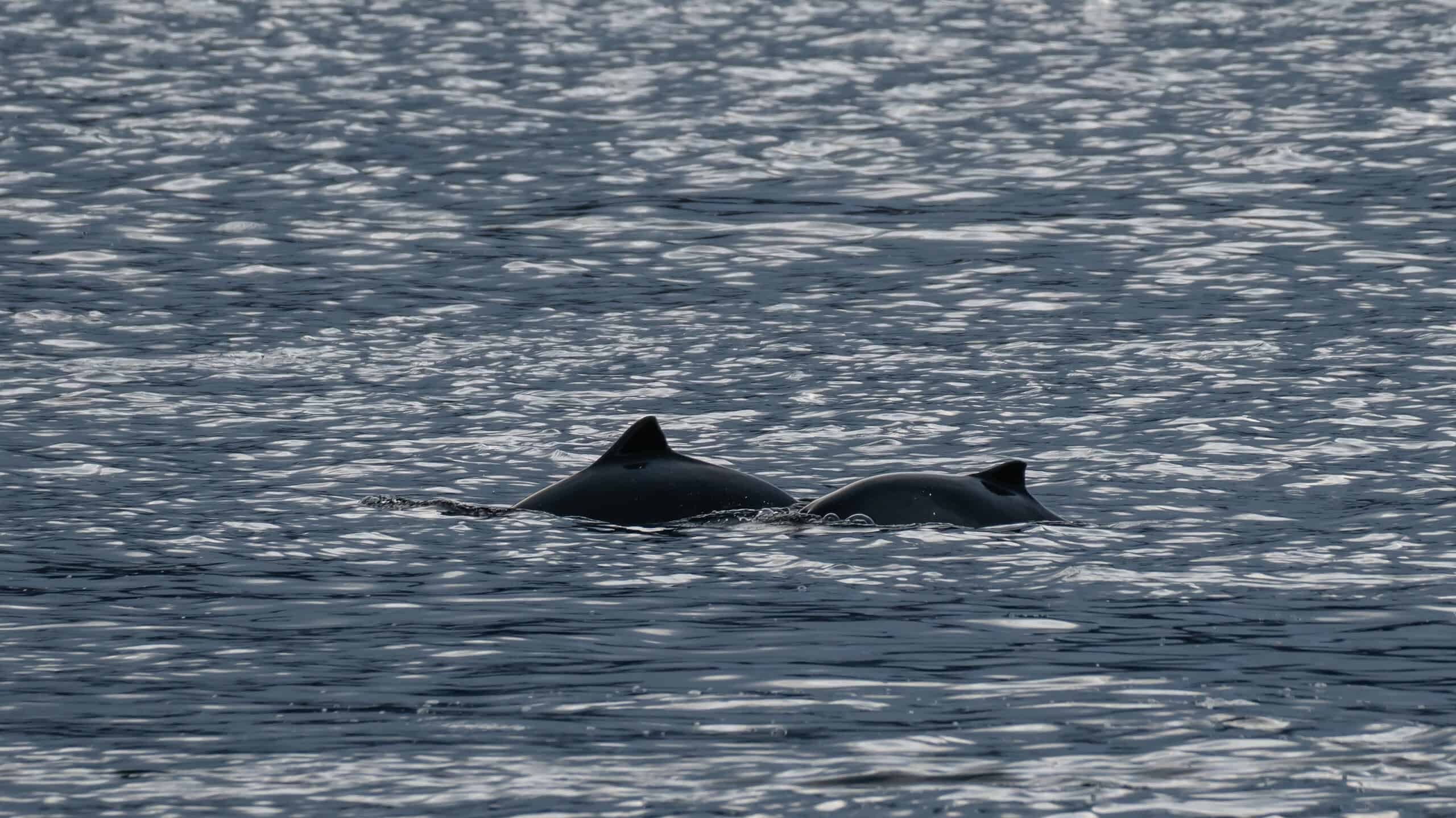As its mighty waves crash upon the shore, the Atlantic Ocean captivates us with its sheer power, magnitude, and beauty. The diverse marine life that thrives within its waters showcases the incredible biodiversity of our planet, home to majestic whales, graceful dolphins, and colorful coral reefs. Stretching endlessly across the Earth’s surface, its azure depths hold countless mysteries and secrets waiting to be discovered. Let’s take a closer look at 15 amazing facts about the Atlantic Ocean!
1. The Atlantic Ocean Covers 20% of the Earth

According to most experts, there are five oceans in the world today.
©BlueRingMedia/Shutterstock.com
Spanning over 41 million square miles, the Atlantic Ocean proudly holds the title of being the second-largest ocean on Earth, surpassed only by the mighty Pacific Ocean. Its enormous expanse covers approximately 20% of the Earth’s surface, an outstanding testament to its immense power and beauty. North and South America border it to the west, and Europe and Africa border it to the east. The Atlantic Ocean connects with the mighty Pacific Ocean to the north through the Arctic Ocean, and to the south through the Drake Passage.
2. It’s Named After an Ancient Greek Titan
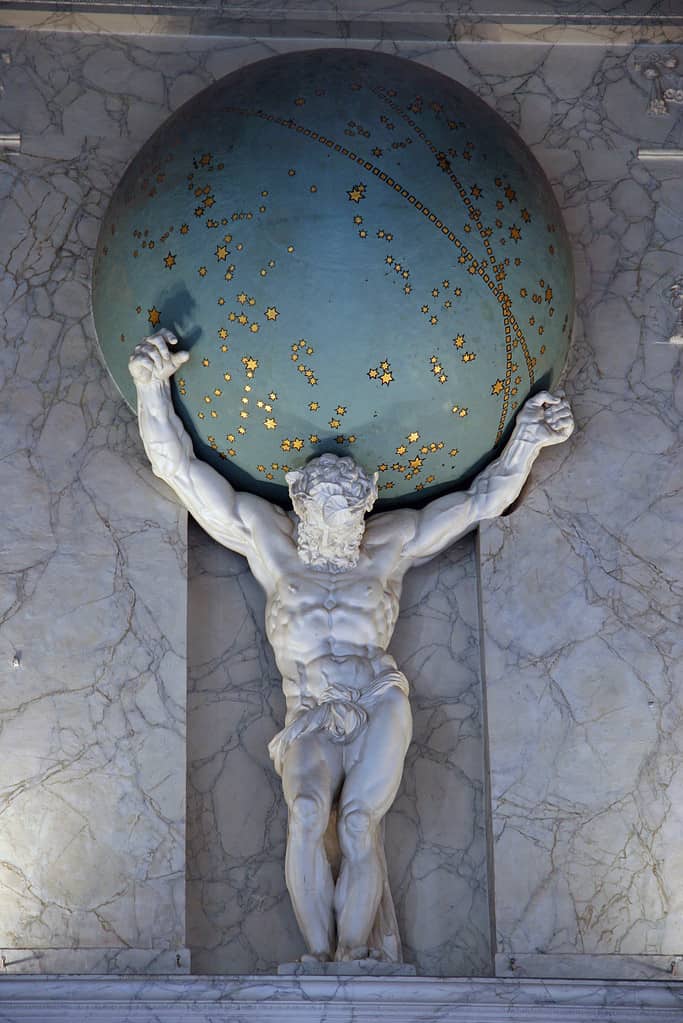
Atlas held up the heavens and sky, keeping the world in place.
©Simon Phipps/iStock via Getty Images
The Atlantic Ocean got its name from Atlas, a mighty titan in Greek mythology. Atlas fought against Zeus during the Titanomachy, and the Olympian gods subsequently punished him to bear the weight of the heavens for eternity. As early as the sixth century BCE, the term “Atlantic” found its place in the works of the esteemed Greek poet, Stesichorus. Stesichorus eloquently referred to the Atlantic Ocean as the Atlantikôi pelágei, meaning “the Atlantic Sea.” The ancient Romans, too, showed reverence to this great expanse, calling it Mare Atlanticum, or “the Sea of Atlas.” Over time, “Atlantic” became the widely accepted name for this awe-inspiring ocean in English and other European languages.
3. The Atlantic Ocean Is Divided in Two

North Atlantic right whales are docile, baleen whales that tend to keep close to the coast.
©iStock.com/6381380
The Earth’s equator divides this mighty ocean into two realms: the North Atlantic and the South Atlantic. Although connected, the two parts of the Atlantic Ocean have many differences. The North Atlantic Ocean is the smaller of the two, with cooler waters and less sunlight. It is home to many unique marine species, like the leatherback sea turtle, basking shark, and North Atlantic right whale. On the other hand, the larger South Atlantic Ocean enjoys warmer, saltier waters. It is home to its own unique species, such as the southern right whale and the South American sea lion.
4. The Milwaukee Deep Is the Deepest Point in the Atlantic Ocean
Nestled within the Puerto Rico Trench, the Milwaukee Deep claims the esteemed title of the deepest point in the Atlantic Ocean, reaching an awe-inspiring maximum depth of 27,480 feet! Located approximately 84 miles north of Puerto Rico’s coastline, the Milwaukee Deep is a relatively unexplored area. It was first discovered by the United States Navy cruiser, the USS Milwaukee, in 1939.
The Milwaukee Deep is an amazing but incredibly challenging environment. At the very bottom, the water pressure reaches an astonishing 1,600 times that of sea level! The temperature remains persistently frigid, with an average of around 39 degrees Fahrenheit. The first to explore its dark depths was Victor Vescovo in 2018.
5. The Atlantic Ocean Is Connected to Every Ocean on the Planet
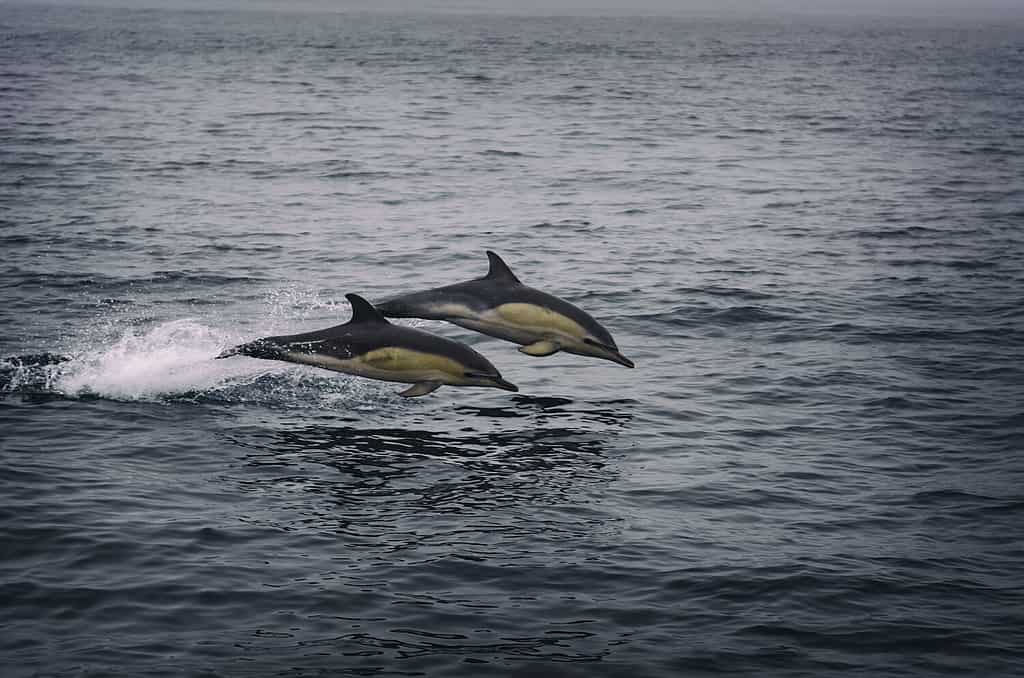
The unique conditions of the Atlantic Ocean make it a prime habitat for all kinds of beautiful animals.
©mark mulhern/Shutterstock.com
The Atlantic Ocean has a distinct connection to the other major oceans on Earth. It connects to the Arctic Ocean through the Barents Sea, Norwegian Sea, Greenland Sea, and Denmark Strait. In contrast, the Drake Passage, a narrow but significant pathway between South America and Antarctica, serves as the only route connecting the Atlantic and Pacific Oceans. The Southern Ocean (or Antarctic) also connects to the Atlantic through the Drake Passage. In the southern region, the Drake Passage further acts as the natural link for the Atlantic to merge with the Indian Ocean through the Southern Ocean.
6. There Are Mountains Beneath the Atlantic Ocean

The Mid-Atlantic Ridge contains all kinds of incredible formations, such as enormous carbonate spires.
©NOAA Photo Library: expl2229 / CC BY 2.0 – Original / License
The Atlantic Ocean is not only vast and majestic, but it also holds a hidden gem beneath its depths — the Mid-Atlantic Ridge. With its jagged peaks and deep crevices, this sprawling underwater mountain range stretches along the center of the ocean. The Mid-Atlantic Ridge represents a remarkable plate boundary where two ocean-floor plates diverge from one another. This mesmerizing phenomenon, aptly named “seafloor spreading”, generates a fresh oceanic crust as molten magma rises up from the depths of the Earth’s mantle, seamlessly filling the void. Spanning thousands of miles, the Mid-Atlantic Ridge serves as a physical boundary between the Eurasian and North American tectonic plates.
7. The Famous Bermuda Triangle Is in the Atlantic Ocean
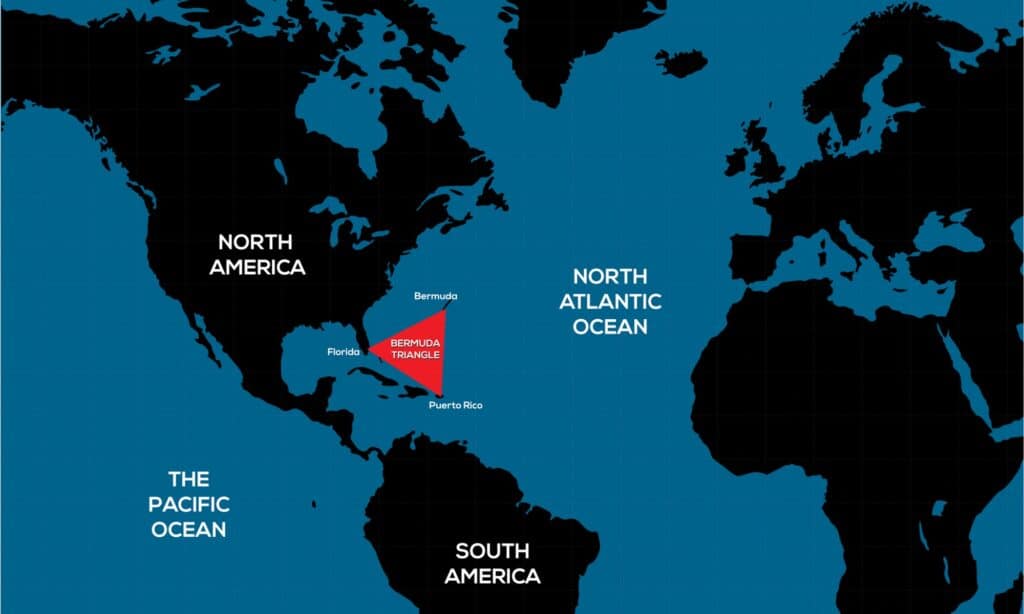
Some refer to the Bermuda Triangle as the Devil’s Triangle.
©iStock.com/GEMINI PRO STUDIO
The legendary Bermuda Triangle is in the Atlantic Ocean. Enigmatic and not entirely understood, the Bermuda Triangle is a loosely defined region in the vast expanse of the western North Atlantic Ocean. In this region, numerous aircraft and ships have purportedly vanished under mysterious circumstances. Stretching from the shores of Miami to the islands of Bermuda and Puerto Rico, this area has captured the imagination of many, although its existence lacks any scientific evidence thus far. However, the mystery and intrigue of the Bermuda Triangle is as strong as ever, as it is hard to explain how so many disappearances have occurred in the area over the years.
8. The Atlantic Ocean Is Home to an Incredible Sea of Seaweed
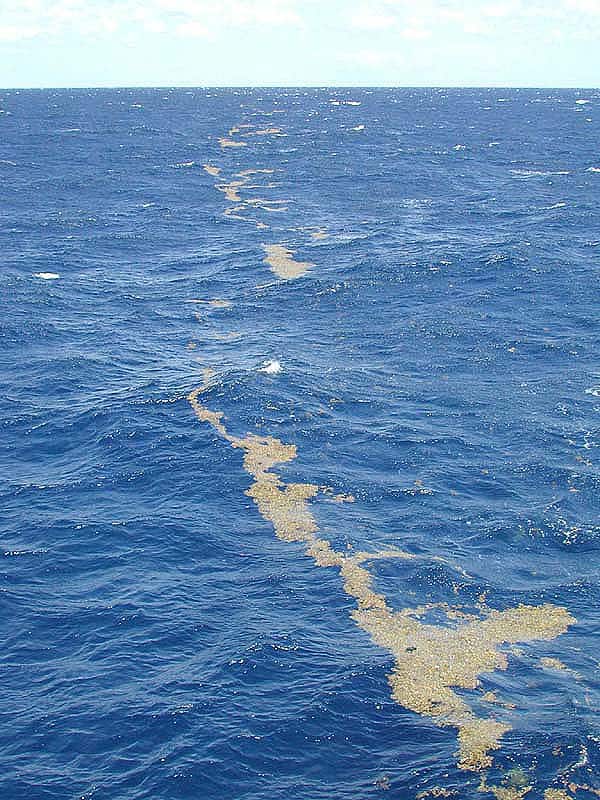
The Sargasso Sea is the only sea without a land boundary.
Nestled between the Azores, Bermuda, and the West Indies, the Sargasso Sea is a rather unusual region of the North Atlantic Ocean. Unlike other seas, the Sargasso Sea knows no boundaries and is shaped by converging oceanic currents. However, what really makes the Sargasso Sea so unique is its golden Sargassum seaweed. Growing up to 60 feet in length, Sargasso seaweed stretches as far as the eye can see, painting the region with earthly shades. The calm, radiant blue water beneath the seaweed provides a haven for a diverse array of marine creatures, including elusive fish, nimble crabs, and delicate shrimp.
9. Iceberg Alley Is Located in the Atlantic Ocean
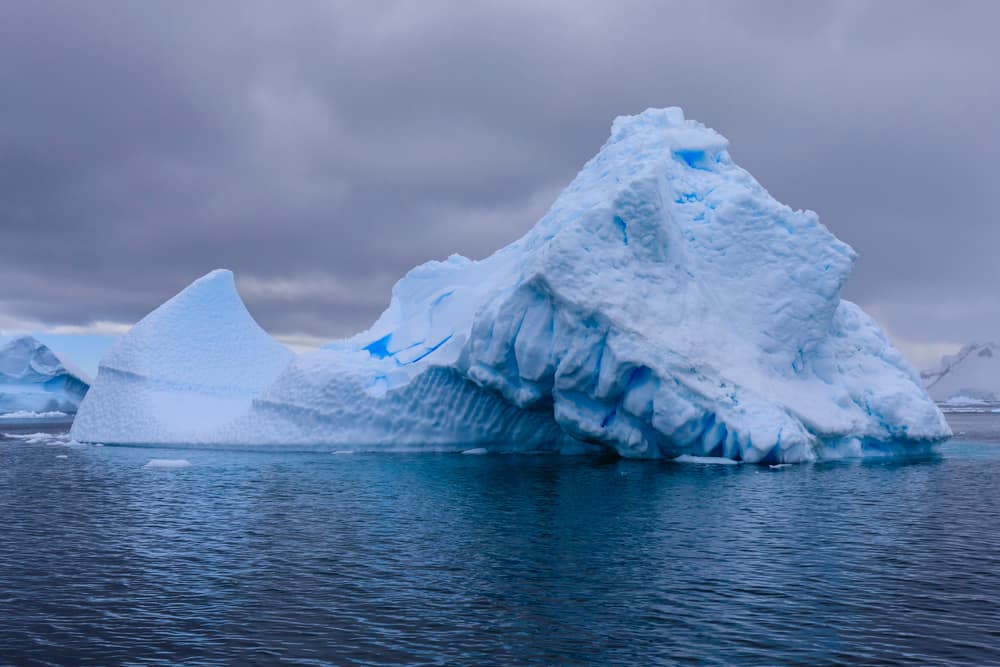
Much of an iceberg’s mass is actually hidden beneath the water’s surface.
©Eleanor Scriven/Shutterstock.com
Just off the coast of Newfoundland and Labrador in Canada, Iceberg Alley is an incredible stretch of water in the North Atlantic Ocean. Located right at the point where two powerful ocean currents collide, Iceberg Alley is a unique and dynamic oceanic battleground. Here, the chilly Labrador Current from the Arctic Ocean crashes into the warm Gulf Stream from the tropical Gulf of Mexico. This collision causes the waters to become restless and unpredictable. Within this tumultuous region, many incredible icebergs are born — some as large as 330 feet tall and 6.2 miles long!
10. The RMS Titanic Rests at the Bottom of the Atlantic Ocean

About 2,224 people were aboard the Titanic.
©Robert John Welch (1859-1936), official photographer for Harland & Wolff / public domain – Original / License
On April 14, 1912, the luxurious RMS Titanic tragically collided with one of the icebergs in Iceberg Alley, leading to the catastrophic loss of over 1,500 lives. An Olympic-class Ocean liner operated by the White Star Line, the Titanic boasted impressive features such as a double hull and 16 watertight compartments. Although it was designed to be virtually unsinkable, however, more than four of these compartments were breached after the ship struck the massive iceberg in the middle of the night. The Titanic sank at 2:20 AM on April 15. It now rests at the bottom of the Atlantic Ocean, over 12,000 feet below the surface.
11. The Atlantic Ocean Was the First Ocean to Be Crossed by a Ship
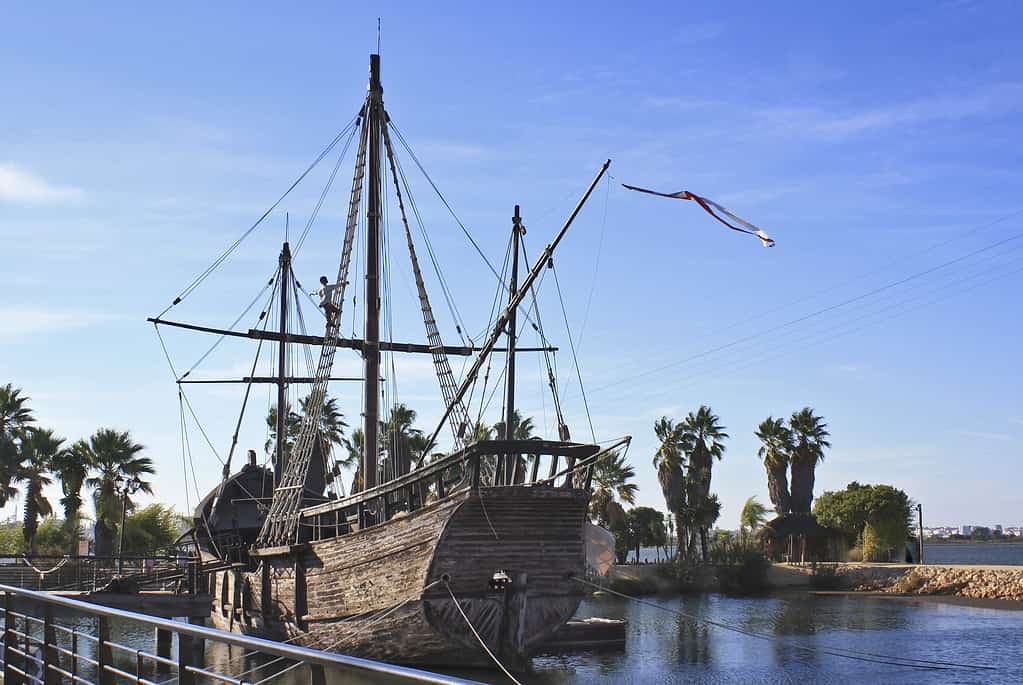
At the Wharf of the Caravels, a museum in Spain, you can see a replica of Christopher Columbus’s ship.
©McXas/iStock via Getty Images
In 1492, the Spanish Caravel La Pinta made history as the first ship to traverse the vast Atlantic Ocean as part of Christopher Columbus’s fleet. Departing from Spain, Columbus and his crew embarked on their momentous journey to uncover new lands, eventually arriving in the Bahamas, which they initially believed to be the fabled India. Columbus crossed the majestic Atlantic Ocean four times from 1492 to 1502. Later in 1520, Ferdinand Magellan’s fleet also crossed the Atlantic Ocean on their way from Spain to South America.
12. The Atlantic Ocean Was the First Ocean Crossed by a Plane
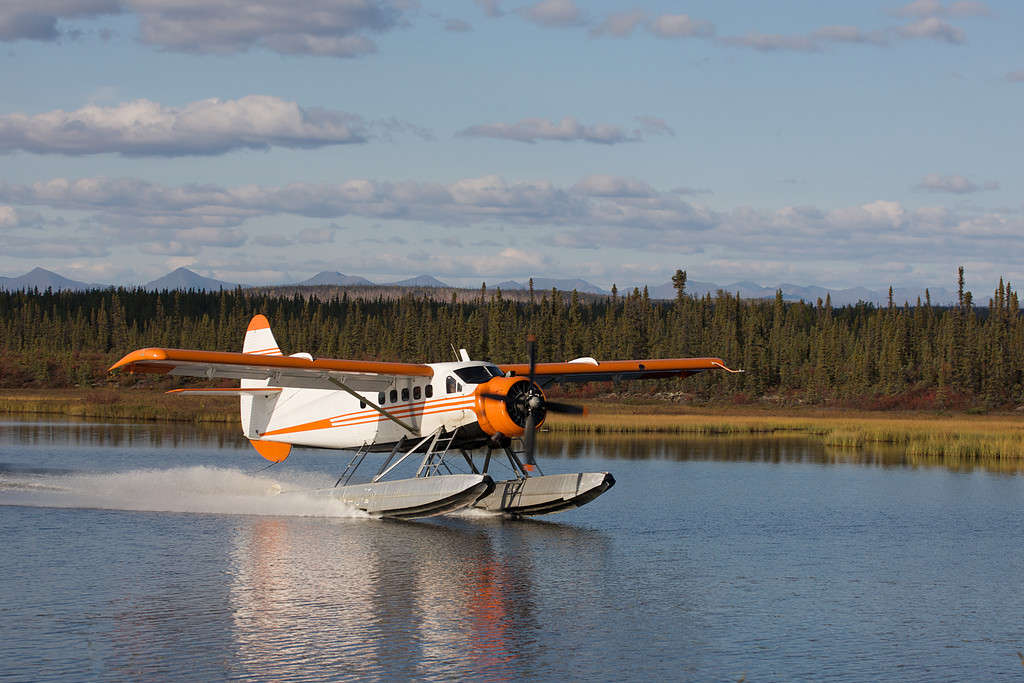
Seaplanes can both take off and land on the water’s surface.
©joshanon/iStock via Getty Images
Embarking from Newfoundland and making its triumphant landing in Ireland in 1919, the American NC-4 was the first plane to successfully cross the vast expanse of the Atlantic Ocean. The NC-4 was a remarkable four-engine biplane, a flying boat that could take off and land on water. British aviators John Alcock and Arthur Brown embarked on the journey on June 14. They arrived at their destination on June 15 after less than 16 hours in the air. Later in 1927, aboard the Spirit of St. Louis, Charles Lindbergh flew from New York to Europe in the first solo crossing of the Atlantic Ocean.
13. Amelia Earhart Flew Across the Atlantic Ocean

Amelia Earhart disappeared over the Pacific Ocean in 1937.
©Everett Collection/Shutterstock.com
The famous female aviator, Amelia Earhart, was the first woman to fly across the Atlantic Ocean in 1928, accompanied by pilots Wilmer Stultz and Louis Gordon. A few years later in May 1932, she achieved another milestone by becoming the first woman to fly solo across the Atlantic Ocean. Tragically, Earhart’s inspiring journey came to an abrupt end during her attempt to circumnavigate the globe. In 1937, she, along with her navigator Fred Noonan, disappeared during this fateful flight.
14. There Are Diamonds Along the Ocean Floor of the Atlantic

The diamonds mined from the seafloor near Namibia are extremely high-quality.
©DiamondGalaxy/Shutterstock.com
Believe it or not, not all diamonds are found on dry land — there are also diamonds along the floor of the Atlantic Ocean! Forged deep within the heart of southern Africa millions of years ago, the Orange River carried these diamonds westward into the vastness of the Atlantic Ocean. Some of these diamonds ended up on the beaches of Namibia, giving rise to the historic diamond rush of 1908. However, many others never left the sea, finding solace in the sediment of the ocean floor. In recent years, the Namibian Government and the De Beers diamond company have mined hundreds of thousands of carats from the Atlantic’s seabed.
15. The Atlantic Ocean Is Home to a Wide Variety of Rich Marine Life

Climate change and human activities are a major threat to the Atlantic Ocean and its inhabitants.
©comolok/Shutterstock.com
The vastness of the Atlantic Ocean is teeming with a captivating array of marine life. It showcases countless marine wonders that span from the tiniest plankton to the majestic whales that grace its depths. This richness in biodiversity is the result of a fascinating interplay of factors. For example, as the second-largest ocean on our planet, the Atlantic Ocean’s colossal expanse covers an enormous range of latitudes, from icy Arctic waters to warmer tropical waters.
This incredible diversity of temperatures creates an ideal habitat for a wide variety of species, from chilly polar creatures to sun-loving tropical dwellers. In addition, the ocean’s impressive depth, with abyssal plains, vast stretches of underwater plains, and underwater mountain ranges, allow countless unique communities of organisms to thrive. Each of these distinct habitats supports its very own ecosystem, contributing to the remarkable biodiversity of the Atlantic.
Thank you for reading! Have some feedback for us? Contact the AZ Animals editorial team.

